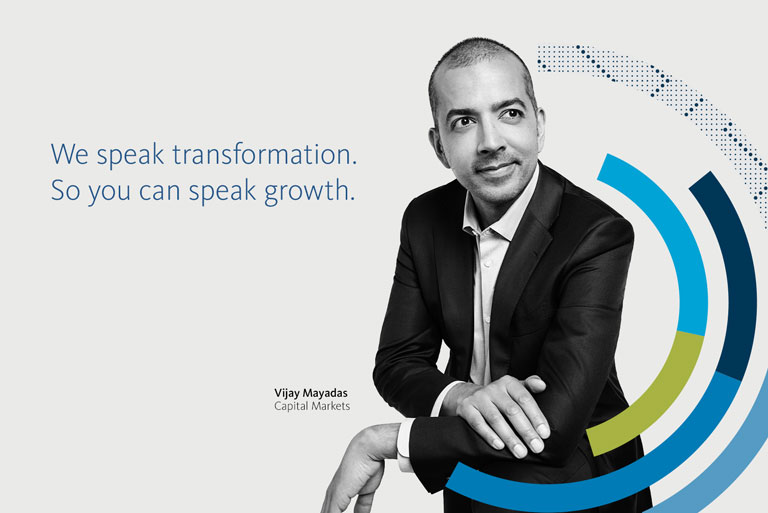The status quo: Frustration
Today’s global enterprise is a labyrinth of legacy systems and fragmented processes. Over time different geographies and lines of business build up different operational infrastructures, which adds layers of complexity and inefficiency.
These legacy systems consume significant resources to update and maintain. In-house legacy systems are especially problematic because they require unique in-house expertise. IT teams build custom patch fixes and ad-hoc systems that only compound operational challenges. Several Broadridge clients, we found, actually added new systems just to help their old systems talk to each other.
The truth is that firms get stuck in the mud. They tinker around the margins, making minor improvements and driving minimal efficiency gains. Eventually, however, the law of diminishing returns takes over.
In the end, transformation becomes your only safe play.
Technology modernization
To disrupt the status quo, look for ways to modernize your technology infrastructure. The right technology can help you achieve two main things: Automation and process consolidation. Too many activities in Capital Markets are still primarily manual, which amplifies risk, increases error and costs more to manage.
The good news is that there are purpose-built solutions that can help transform and vastly simplify routine processes. Consider asset servicing and corporate actions processing. With more corporate actions in more markets, it’s hard to keep up. But firms are finding they can bring all corporate actions processing onto a centralized platform. The result: A golden view of data that helps automate much of the process, enabling teams to easily view, manage and report across every event. The best part is that corporate actions processing can be managed by exception, so personnel have more bandwidth to focus on other things.
The key with more modern solutions is that they empower you to consolidate disparate platforms and data feeds onto a single platform. Driving consolidation in this way can yield exponential gains. Instead of incremental improvements, you can make major leaps in a hurry.
You don’t need to go process by process either. Instead, imagine what you could achieve if you brought all post-trade operations onto a single platform. Industry-leading solutions offer support for multiple markets, currencies and asset classes. They empower firms to streamline trades, balances, positions and P&L across all lines of business. Along with driving real efficiency, consolidated platforms don’t require huge IT departments to update and maintain. One system requires one update at a time.
In every respect, consolidation is simpler, more efficient and more cost-effective.
Data management
Technology modernization and consolidation goes a long way in helping firms streamline data management. These solutions bring together fragmented and siloed data from across the enterprise, which helps maximize visibility and improve decision making.
But consolidating fragmented data is only the beginning. Capital Market firms still need to reconcile transaction data across the firm and between counterparties. In fact, data reconciliation is one of the most challenging activities to simplify, precisely because it involves data outside the firm. That’s why leading companies are turning to new data connectivity and intelligent automation solutions.
Available industry solutions make it easier for Capital Market firms to connect trading systems, exchanges, CCPs, clearing centers, custodians and network providers. At the same time, data structuring and formatting solutions empower firms to standardize message types for payments, cash, commodities, securities, trade finance, and more. From non-ISO to ISO-standard connectivity with counterparties, firms can harmonize messaging across a wide variety of sources and platforms. Simplifying and standardizing inter-party data transfer in this respect helps firms dramatically streamline data reconciliations.
Of course, data standardization doesn’t eliminate the need for reconciliation—it just makes exceptions easier to identify. Perfect data transfer between parties will still require ongoing resources to route and resolve breaks. It’s no surprise, therefore, that we’re seeing more firms turn to machine learning and artificial intelligence to further transform data reconciliation processes. AI-driven algorithms can automatically build matching schemes based on historical data, improve matching schemes based on daily activity and suggest the most efficient exception resolution. In some cases, machine learning works even smarter than humans, finding simpler models to adapt and deploy.
Combined with standardized data connectivity, AI-driven intelligent automation empowers firms to perform high-speed matching with fewer resources and greater accuracy. Bottom line: Firms can significantly drive down operational costs while still seeing significant gains in performance.
Mutualization
Mutualizing non-differentiating operations can enhance both technology modernization and streamline data management. Consider that all firms must manage post-trade processing and data reconciliation. Both of these activities are standard across virtually every firm in the industry. Instead of different firms trying to build and operate their own platform to do the exact same activity, more firms are coming together to outsource operations onto shared utilities.
Imagine how much it could simplify data transfer if every firm plugged into the same post-trade platform. Not only could it streamline data sharing, but firms would also be able to mutualize investment in innovation and platform updates. In today’s environment, there are hundreds of firms trying to build solutions to solve the same problems as everyone else. So, mutualization means not only sharing the platform itself, but also cost-sharing resources for problem-solving and ongoing maintenance.
Systematically mutualizing operations in this respect can unlock significant economies of scale that make day-to-day ops much cheaper for all parties in the value chain. No doubt, it’s a long-term vision to mutualize shared activities across an entire industry. Nevertheless, it’s a worthwhile end-state toward which we should all aspire.
In the nearer term, we’re finding that more narrowly tailored solutions can help drive the push toward broader mutualization. For example, we’re using blockchain technology to radically transform the way bi-lateral repo trades are managed and executed.
If you think about the process today, bi-lateral repo is extremely complex. There are several parties and counterparties, all of which must maintain their own trading, valuation and settlement records. With blockchain technology, however, we can now use smart contracts to bring all that transaction data onto a shared ledger, giving all parties access to an instantly verifiable single source of truth. Not only does this method of managing bi-lateral repo significantly reduce processing costs, it also helps drastically reduces risk and error.
Broadridge is doing something similar in the fixed-income space, using AI-driven technology to match buyers and sellers, create liquidity and reduce information leakage. Historically, bond trading has been a relationship-driven, mostly analog practice. But we’ve found that intelligent algorithms can drive a more efficient marketplace. By bringing together buyers and sellers onto a consolidated information-sharing platform, we can empower firms to understand pre-trade liquidity while optimizing trade execution. Again, this is only possible by mutualizing processes that several firms previously did in parallel and isolation.
Ignite your transformation
When market disruption increases the gap from where you are to where you want to be, constant transformation is the only safe play. But where do you invest? What do you prioritize? Your ability to transform with confidence requires capabilities no firm can achieve on their own.
Let us help.
We’ll empower you to reach beyond your own four walls to tap into a wider network of expertise, data, and technology. Our unique vantage point from the center of the financial services industry enables deeper insight, mutualized costs and more confident decisions.
Harness next-gen technologies to optimize securities operations while managing risk and regulation. Turn data into a strategic asset that can help you pinpoint opportunity and lower operational costs. From post-trade processing and compliance, to unique analytics and regulatory communications, we’ll help you confidently navigate the challenges of tomorrow.


